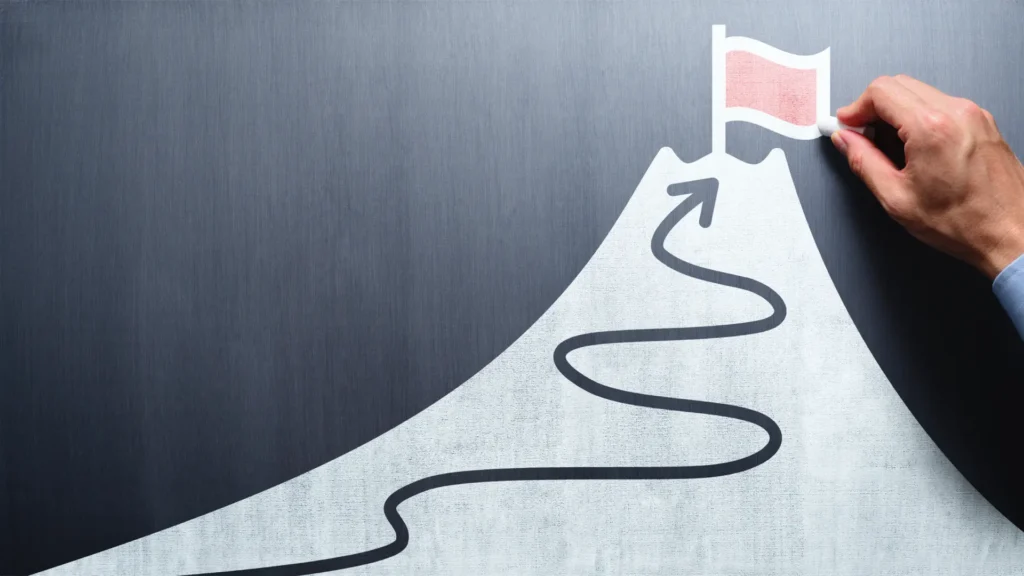

Key Takeaways
- Internal job descriptions are detailed documents for alignment and approval before the hiring process begins.
- Job summaries should outline the purpose, responsibilities, level of seniority, and nature of the position.
- Clearly outlining expectations for success in a role promotes equality and fairness in the hiring process.
- Crafting job responsibilities requires prioritization, specificity, and highlighting impact on team / organization goals.
- Experience, skills, and technologies should be carefully considered to create an inclusive job posting that attracts diverse candidates.
Let's be honest: writing a job description rarely tops the “fun” list. Managers often rely on tired templates or generic online finds, resulting in job descriptions that read like laundry lists of impossible tasks. But what if we told you a powerful job description could be the secret weapon of your recruitment strategy?
Think about it: a confusing or poorly written job description can lead to a cascade of problems. Recruiters struggle to identify qualified candidates. Hiring managers interview people who seem like a mismatch. Candidates themselves are left scratching their heads about the role's true purpose. Salary expectations get thrown out of whack. And all this happens before you even get to the first interview.
This blog post is here to change the game. We'll show you how to craft a job description that sings (well, at least gets its point across clearly). We'll guide you through the process of creating a powerful document that sets expectations, gets everyone on the same page, and can be used to attract the right talent. Let's get started.
What's the difference between a job description and a job ad?
Before you begin crafting your recruitment materials, it's crucial to understand the distinction between a job description and a job advertisement.
Job descriptions are your internal roadmap
Think of a job description as your internal roadmap for the perfect hire. It's a comprehensive document used for numerous purposes, including securing budget approval for the role, preparing interview questions, onboarding new hires, discussing career development paths, and setting compensation benchmarks. This in-depth document details the core responsibilities, skills, and qualifications required for success.
Job ads are a marketing tool
The job advertisement, on the other hand, is an outward-facing marketing piece designed to attract top talent. It uses key elements from the job description to showcase the position's most appealing aspects. Here, you'll highlight the company culture, enticing benefits (like remote work options or stand-out health coverage), salary range, and perks to create an irresistible opportunity for qualified candidates.
Revisit the job description when you're backfilling a role
One final consideration: is this role a backfill for an existing position or a completely new position? For a backfill, take time to evaluate any changes in responsibility since the original description was written. Ensure your description accurately reflects the current expectations and requirements of the role. For a new position, you'll be building the job description from the ground up, drawing inspiration from the needs and goals of your growing team.
Choose the right job title to make a good first impression

Your job title is the first impression you make on potential candidates. Striking the right balance can be tricky, but focusing on clarity and searchability will help you attract the best fit. Here's how to make your job title work hard:
- Clarity is king: Keep it clear and concise. Use standard language that everyone can understand, even outside your industry. Skip the trendy phrases—they might not age well. Avoid company-specific acronyms or abbreviations that could leave an outside audience confused.
- Embrace the power of keywords: Think about the terms internal recruiters and potential candidates would use to search for this role. Include relevant keywords throughout the title to improve visibility in searches and applicant tracking systems.
- Fight title inflation: Resist the urge to inflate the seniority level of the position in the title. Match the title to the actual responsibilities and requirements of the job. Inflating titles can lead to mismatched expectations, particularly around compensation and experience level.
Nail the job summary to ensure internal alignment
The job summary lays the groundwork for a smooth and aligned hiring process. By providing a clear and concise overview, you can ensure everyone involved is on the same page about the role's purpose, impact, and requirements. Here's what to include in an effective job summary:
- Establish shared understanding: Start with a crystal-clear overview (3-4 sentences) outlining the position's core function, key responsibilities, and contribution to the team. This establishes a shared understanding from the outset.
- Highlight the role's impact: Explain how the role directly impacts the team's success and organizational objectives. This clarifies the role's value within the broader structure.
- Define the career level: Clearly define the seniority level, whether it's an individual contributor or a manager. This ensures everyone understands the responsibilities and potential career path associated with the role.
- Include the role duration: Be upfront about the position's duration, specifying if it's permanent or temporary. Transparency avoids confusion and helps align expectations for all stakeholders involved in the hiring process.
Core competencies for a thriving team include soft skills
Technical skills are important, but they're just one piece of the puzzle. Core competencies are the essential qualities that make someone truly exceptional within your organization. These go beyond technical ability and encompass the soft skills that drive effective communication, teamwork, and overall success. They're what determine how well a candidate will fit with your team, add to your culture, and contribute to your long-term goals.
Examples of common core competencies
The key is to pinpoint the specific competencies that are essential for both the role and your organization. Here are some common core competencies, but remember to tailor your list to your specific needs:
- Communication powerhouse: Can they effectively convey information, actively listen, and tailor messages for diverse audiences?
- Problem-solving pro: Do they excel at identifying and analyzing issues to develop timely and effective solutions?
- Embrace the change: Can they adapt positively to new challenges and opportunities, demonstrating a growth mindset?
- Leadership potential (for leadership roles): Do they have the vision, executive presence, and skills to inspire and guide teams toward common goals?
- Team player: Can they work effectively within a team, valuing diversity and fostering a collaborative environment?
Tailor core competencies for your company culture
Many companies already have established organization-wide core competencies that are often defined in performance reviews or interview rubrics. These are a fantastic starting point to build out your competency list for the job description. By incorporating these core competencies, you can ensure your ideal candidate aligns with your company's overall values and strategic goals.
Define what success looks like for a winning hire

A well-written job description not only outlines responsibilities but also paints a clear picture of what success looks like in the role. Here's why this matters:
- Setting clear expectations: Explicit success metrics help candidates understand what's expected of them, reducing ambiguity and self-selection. They can gauge their fit for the role based on measurable goals and desired skills. These metrics can encompass both quantifiable achievements (e.g., sales targets) and qualitative contributions (e.g., improving team collaboration).
- Promoting fairness and transparency: Objective criteria for success ensure all candidates are evaluated on a level playing field based on performance and contribution. This reinforces a commitment to a diverse and inclusive hiring process, where everyone has a fair shot.
- Boosting candidate confidence: Highlighting success metrics attracts qualified candidates who are confident in their ability to meet or exceed expectations.
- Creating a culture of achievement: Outlining success metrics within the job description sets the tone for a culture that values results and celebrates accomplishments.
Here are some examples of how success can be measured in different job roles:
- Marketing: Campaign performance metrics (e.g., website traffic, lead generation), increase in brand awareness, social media engagement.
- Project Management: On-time and within budget project completion rate, team satisfaction with project management style, meeting project goals and objectives.
- UX (User Experience) Design: User satisfaction scores, usability testing results (e.g., task completion rates, time on task), website / app conversion rate improvement, reductions in user errors.
- Software Engineering: Number of bugs identified and resolved, code quality metrics (e.g., code coverage, maintainability), successful deployment of features on time and within budget, positive feedback from internal and external users.
Go beyond numbers as well
Remember, success isn't always about hard numbers. Consider including qualitative measures that reflect the specific role and company culture, such as:
- Leadership: Mentoring junior colleagues, fostering a collaborative team environment, taking initiative, and driving results.
- Problem-solving: Ability to identify and resolve complex issues effectively.
- Communication: Clear and concise written and verbal communication, strong presentation skills, active listening.
Paint the picture of day-to-day job responsibilities
The job responsibilities and duties section is a window into the heart of the role. It gives potential candidates a clear understanding of their day-to-day activities and what's expected of them. Here's how to get this section right:
- Focus on the core: Start by brainstorming all potential responsibilities. Then, refine this list to highlight the seven or eight most critical duties. This helps avoid information overload and ensures clarity on the role's essence.
- Prioritize the powerhouse tasks: Organize these duties in descending order of importance, starting with the most crucial tasks. This allows candidates to quickly grasp the role's main focus and how they'll spend most of their time.
- Use action verbs: Use clear, concise action verbs to describe each duty. This helps candidates visualize themselves performing the job. For example, instead of “Project Management,” use “Leads and executes projects from conception to completion.”
- Connect the dots: Don't just list tasks; connect each duty to its broader impact on the team, department, or organization. This showcases the role's significance and how it contributes to the company's goals. For example, instead of “Prepares marketing materials,” use “Develops compelling marketing materials that drive brand awareness and lead generation.”
Build your candidate profile with experience, skills, and technologies
A strong candidate profile is essential for attracting the ideal person for the role. The natural tendency might be to set the bar incredibly high, seeking candidates with the most experience and credentials. This approach often excludes qualified individuals and, in the context of a job posting, discourages applications—particularly from diverse or underrepresented groups.
Instead, focus on defining the essential qualifications for the position:
- Prioritize needs over wants: Clearly define the essential skills and experiences that directly impact success in the role. Avoid listing “nice-to-haves” that might unnecessarily exclude qualified candidates.
- Embrace different paths: Consider transferable skills and alternative routes to acquiring relevant experience. This broadens the pool of potential candidates and opens doors for internal upskilling or reskilling opportunities.
This approach allows you to screen in potential candidates who deserve a closer look during the interview process, fostering a more inclusive and efficient hiring experience.
Identify the right skills
A clear understanding of the essential skills is crucial for a strong job description. They help identify the ideal candidate's capabilities and ensure a successful hire.
- Analyze the role: Start by thoroughly analyzing the responsibilities and duties. Identify the tasks involved and the skills necessary to perform them effectively.
- Consult experts: Talk to team leaders and current employees in similar roles. Their firsthand experience can provide valuable insights into the practical skills needed for success.
- Prioritize and specify: Once you have a comprehensive list, prioritize skills based on importance and relevance to the role's key responsibilities. Highlight the top skills that are truly indispensable.
- Stay relevant: Regularly review and update the required skills to ensure the job description remains attractive to potential candidates, reflecting both company needs and evolving industry trends.
Match the tools to the job
A clear picture of the necessary technologies helps identify candidates who are equipped for success in the role.
- Focus on essential technologies: Start by evaluating the technical aspects of the role. What software, hardware, platforms, or digital tools are truly essential for performing the tasks? Are these skills generally transferable between similar tools, or is specific knowledge required? Will a new hire need to be proficient from day one, or can they learn the ropes during their ramp-up?
- Consider generative AI experience: Assess if the role requires using specific generative AI tools (for example, for copywriting or creative production), processing / refining AI outputs for final deliverables. Outline what specific AI tools and generative AI skills are necessary if relevant.
- Worry less about general productivity tools: Unless the role requires your new hire to be a power user, it's less important to cover all the general productivity and collaboration tools your team uses in the job description. These can be learned during onboarding or through internal training.
Leverage your job description template as a generative AI prompt
Generative AI can be a powerful tool for boosting your job description writing efficiency. These AI tools can analyze existing data and generate drafts based on your input.
Remember the comprehensive job description template outlined above? This very template can serve as an exceptional prompt framework for generative AI tools. By providing the AI with the key sections of your template, you can generate drafts that already adhere to best practices.
Here's how:
- Start with the basics: Don't feel pressured to fill out every section of your template before engaging the AI. You can even keep your prompt information brief! Provide the AI with core details like:
- Job title and department.
- Brief overview of responsibilities (bullet points are fine).
- Any specific skills or experience requirements (optional).
- AI-powered recommendations: Even with limited information, generative AI can be incredibly helpful. The AI can analyze your basic details and recommend potential core competencies, skills, or tools and technologies that might be relevant to the role. This gives you a valuable starting point for building out the full job description.
- Refine and generate: Once you have a better understanding of the role's requirements, flesh out your template sections with additional details. Then, feed the information into your chosen generative AI tool. The AI will analyze the provided details and generate a draft job description based on your input, best practices, and the recommendations it provided earlier.
Remember, even with AI assistance, human review is key. Always review and edit the AI-generated draft to ensure it accurately reflects your company's voice and specific needs.
The power of a strong job description

There you have it! Investing time in writing a strong job description pays dividends throughout the recruitment process. By following the steps outlined above, you can create a job description that attracts qualified candidates, sets clear expectations, and streamlines your hiring process. Remember, a well-written job description is the foundation of a successful hiring strategy. So, ditch the generic templates and get ready to write job descriptions that get results.
Related

Great brand collaborations are the best to strengthen identity.
Design & Experience, Insights & Trends, Marketing & Creative, Beauty and Fashion

Consumer demand and policy are driving EV market growth.
Development & Technology, Insights & Trends, Automotive

Are you missing opportunities to improve health screenings?
Design & Experience, Marketing & Creative, Health




